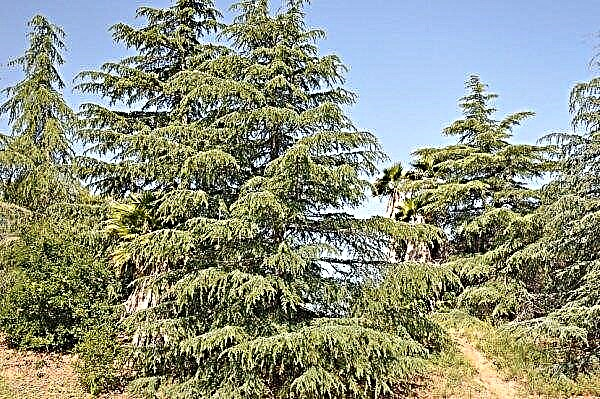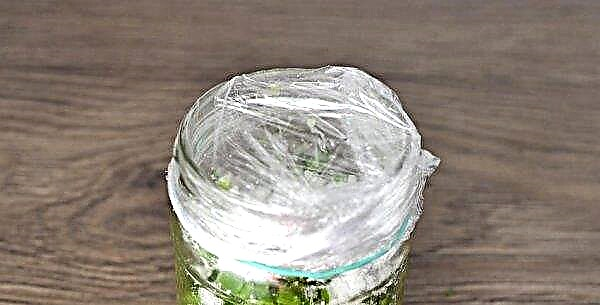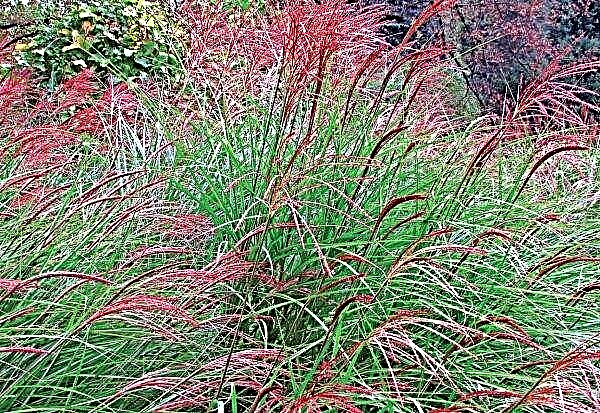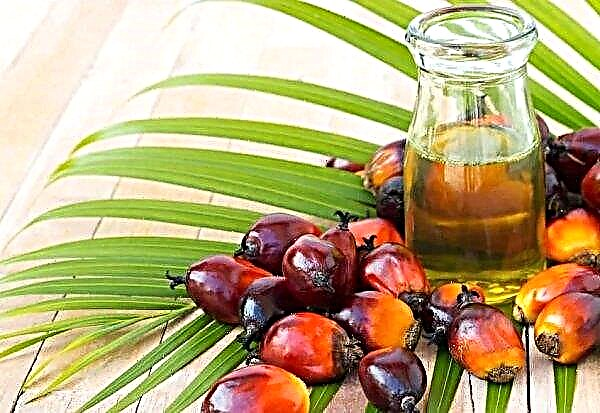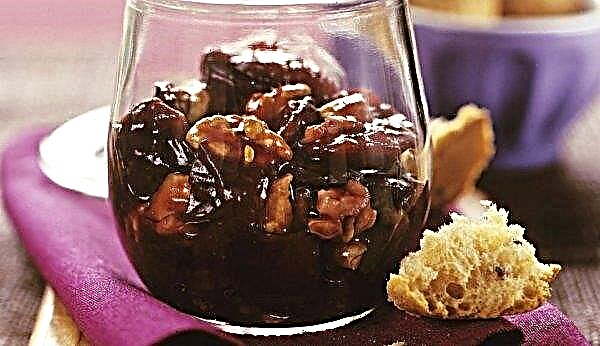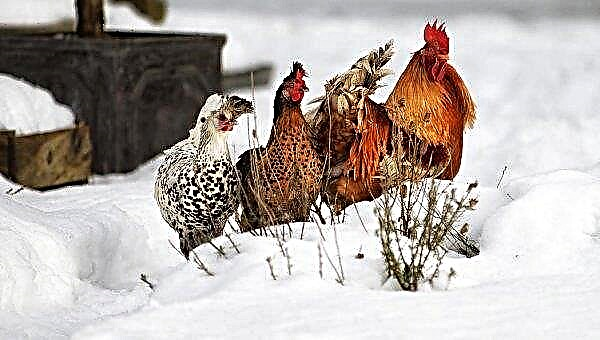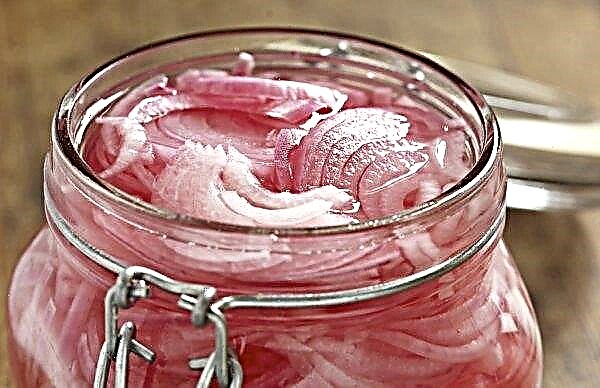Among the many varieties and hybrids of cucumbers, you can choose the right one for any set of requirements. Early varieties begin to bear fruit quickly, others are better suited for salting, some have excellent fresh palatability. Consider the features and benefits of the Libelle F1 hybrid.
Characterization and description of the variety
Widespread and beloved for a long time, Libelle still does not lose its popularity, although it was bred by German breeder F. Kampe in the second half of the last century. It is attractive to a large extent due to the rich taste that distinguishes it from other varieties, and its versatility - from use in the form of gherkins to use for pickling and pickling.
Did you know? Translated from ancient Greek "cucumber" means "immature". Unlike most fruits, it is suitable for eating in green unripe form, and yellow ripened cucumbers are thrown away.
The valuable features of Libelle F1 are also increased yields at the end of fruiting and resistance to many diseases.
Photo gallery
Advantages and disadvantages
Consider the advantages and disadvantages of the hybrid.
- Pros:
- excellent taste;
- high productivity;
- prolonged fruiting;
- resistance to major diseases;
- accurate presentation;
- good transportability;
- Suitable for growing in any type of soil.
- Minuses:
- roughening of the skin during untimely harvesting;
- increased bitterness with a lack of moisture;
- deterioration in appearance due to white spots appearing on green leaves;
- the need for additional pollination with a lack of male flowers.
Thanks to its positive characteristics, the Libelle F1 successfully competes with many modern hybrids.
Optimal landing times
In a warm climate, seeds of this variety can be planted in open ground when the threat of frost passes and the soil warms up to +10 ... + 12 ° С. In more northern areas, sowing should be done in greenhouses and greenhouses. Growing seedlings can begin at the end of April. Seedling method provides a faster onset of fruiting than sowing.
Did you know? On the Pacific islands, one of the signs of material well-being is considered to be the largest possible supply of cucumbers, which, for safety, are buried in the ground, wrapped in banana leaves.
Planting and growing varieties
To ensure stable pollination, it is necessary to plant varietal cucumbers with a large number of male flowers next to this hybrid. And when growing in closed ground for access to pollinators for a day you need to remove part of the sections of the structure. The plant will develop successfully at an air temperature of +26 ... + 27 ° C, soil - at least + 20 ° C, as well as with regular watering. Due to the weak root system, the hybrid needs fertile soil. The beds are prepared in the fall, for which they are dug up and fertilized with humus or manure. If the soil is acidic, liming should be done.
Due to the weak root system, the hybrid needs fertile soil. The beds are prepared in the fall, for which they are dug up and fertilized with humus or manure. If the soil is acidic, liming should be done.
Seed directly into the ground
To increase germination and disease resistance, 2- or 3-year-old seeds can be soaked for 48 hours in the Epina solution. Sowing should be carried out in a quiet, calm and sunny place. 4 holes should be made. 1 m² at a distance of about 30 cm from each other and spill them well with water. If the soil is not fertilized in the autumn, it is worth adding 1 handful of compost or humus to each hole, and fresh manure cannot be used. Seeds need to be planted in 4-5 pieces. to a depth of 3-4 cm. In open ground in cold climates, the bed must be covered with foil. Water the crops should be once every 2-3 days with water heated to + 22 ° C. After the appearance of two real leaves in seedlings, 2-3 more developed sprouts should be left in the hole, and the rest should be cut at ground level.
Seeds need to be planted in 4-5 pieces. to a depth of 3-4 cm. In open ground in cold climates, the bed must be covered with foil. Water the crops should be once every 2-3 days with water heated to + 22 ° C. After the appearance of two real leaves in seedlings, 2-3 more developed sprouts should be left in the hole, and the rest should be cut at ground level.
Growing seedlings
Seedling method allows you to accelerate fruiting for up to 2 weeks. It is better to plant seeds in peat pots with a volume of 0.5 l for 2-3 pcs. to a depth of 2-3 cm.
It is not recommended to choose a smaller container, since the small fragile root system of the hybrid will not tolerate diving and the bushes will take root in a constant place slowly and reluctantly.
Before seedlings appear, the containers covered with a film must be maintained at a temperature of +23 ... + 25 ° С, moistening the soil from the spray gun, and after germination the temperature should be lowered to +15 ... + 17 ° С to prevent seedlings from stretching. In each pot you need to leave one the strongest sprout, and cut off the rest. A week before planting, young bushes should be hardened, taking them out into the open air. The time spent on the street on the first day is no more than 2 hours, in the future the hardening time must be increased.
A week before planting, young bushes should be hardened, taking them out into the open air. The time spent on the street on the first day is no more than 2 hours, in the future the hardening time must be increased.
Important! Before sowing, to select the most viable seeds, they should be poured with 3% saline. For planting, seeds that have sunk to the bottom are suitable, and pop-ups should be discarded.
Landing on a permanent place is carried out on the 20th–25th day after emergence, according to the scheme 50 × 30 cm, to the same depth as in the pots. The beds should be prepared in the same way as for sowing seeds in open ground. The first 5-6 days, the seedlings must be covered with a film from low temperature or shaded from too hot sunlight.
Cucumber care after planting
Compliance with the recommendations for the care of Libelle F1 cucumbers will ensure healthy growth of bushes and abundant long-term fruiting. The hybrid gratefully responds to timely watering, top dressing and getting rid of weeds.
Watering and feeding
In the absence of precipitation, plants should be watered every 2-3 days with water warmed up to + 22 ° C in the morning or evening hours. With the onset of heat, the frequency of irrigation is increased.
If possible, you should use the drip method, and with the usual one, avoid splashing onto the leaves to reduce the risk of diseases. During active fruiting, the amount of water should be doubled. If white dots of new roots appear on the lower part of the stem, they must be sprinkled with earth, making mounds. With a decrease in temperature and the incidence of inclement weather, watering is reduced.
During active fruiting, the amount of water should be doubled. If white dots of new roots appear on the lower part of the stem, they must be sprinkled with earth, making mounds. With a decrease in temperature and the incidence of inclement weather, watering is reduced.Fast-growing lashes should be regularly fed: do the first fertilizer application at the beginning of flowering, and then every 2-3 weeks, usually alternating organic and mineral feeding for pumpkin crops.
Important! The use of horse manure for fertilizing cucumbers is categorically not recommended, since it sharply reduces the taste of the fruit.
Garter and bush formation
Long lashes of Libella F1 need to be tied to trellises with a vertical cultivation method. This increases the culture's resistance to disease and facilitates care. There is no need to pinch the hybrid, as it forms a sufficient number of side shoots. Excess lateral processes, except for a few initial ones, must be removed so that the crop is not crushed.
Weeding and loosening the soil
After each watering, the soil should be mulched with hay or peat. Every 1-2 weeks, it is necessary to loosen the soil to a depth of 5-7 cm, and do this with extreme caution, being careful not to damage the fragile roots of the hybrid. Timely weeding of weeds will protect the crop from moisture loss and infection by fungus and bacteria. When exposing the roots, bushes need to be earthed.
Timely weeding of weeds will protect the crop from moisture loss and infection by fungus and bacteria. When exposing the roots, bushes need to be earthed.
Pest Control
Despite the stability of the hybrid, preventive measures should be taken to protect cucumbers from pests and diseases and observe the necessary growing conditions. If the plants are still infected with rot or powdery mildew, it is necessary to spray with solutions of Bordeaux fluid, copper sulfate or systemic fungicides, regularly remove the affected tops. During fruiting, you can use less harmful home remedies: treat the leaves and whips with a decoction of onion peels, milk serum or a solution of 20 g of laundry soap and 30 drops of iodine per 1 liter of milk.
To protect against attacks, aphids should destroy the anthills that appear on the site. The spider mite also causes great harm to cucumber bushes. To identify it, you must periodically inspect the underside of the leaves.  To prevent infections, you can plant blooming plants or dill next to cucumbers, attracting ladybugs that successfully eat pests.
To prevent infections, you can plant blooming plants or dill next to cucumbers, attracting ladybugs that successfully eat pests.
Harvesting and storage features
To remove ripened cucumbers should be regular and timely, this stimulates the formation of new ovaries. Libelle F1 gives the crop until September, which allows you to collect a large quantity for transportation and processing. Suitable for storage are young strong greenbacks without damage and stains. In wooden boxes lined with paper, they retain freshness for up to 2 weeks in a room with an air temperature of +1 ... + 5 ° C and a humidity of 80%. The content of the crop in closed containers or film is undesirable, so cucumbers will not be able to "breathe" and begin to rot. In the process of transportation, the presentation and quality of the fruits are well preserved.
Due to its productivity, attractive appearance, rich taste and universal application, the Libelle F1 hybrid is successfully grown both in private gardens and large farms for commercial purposes.

